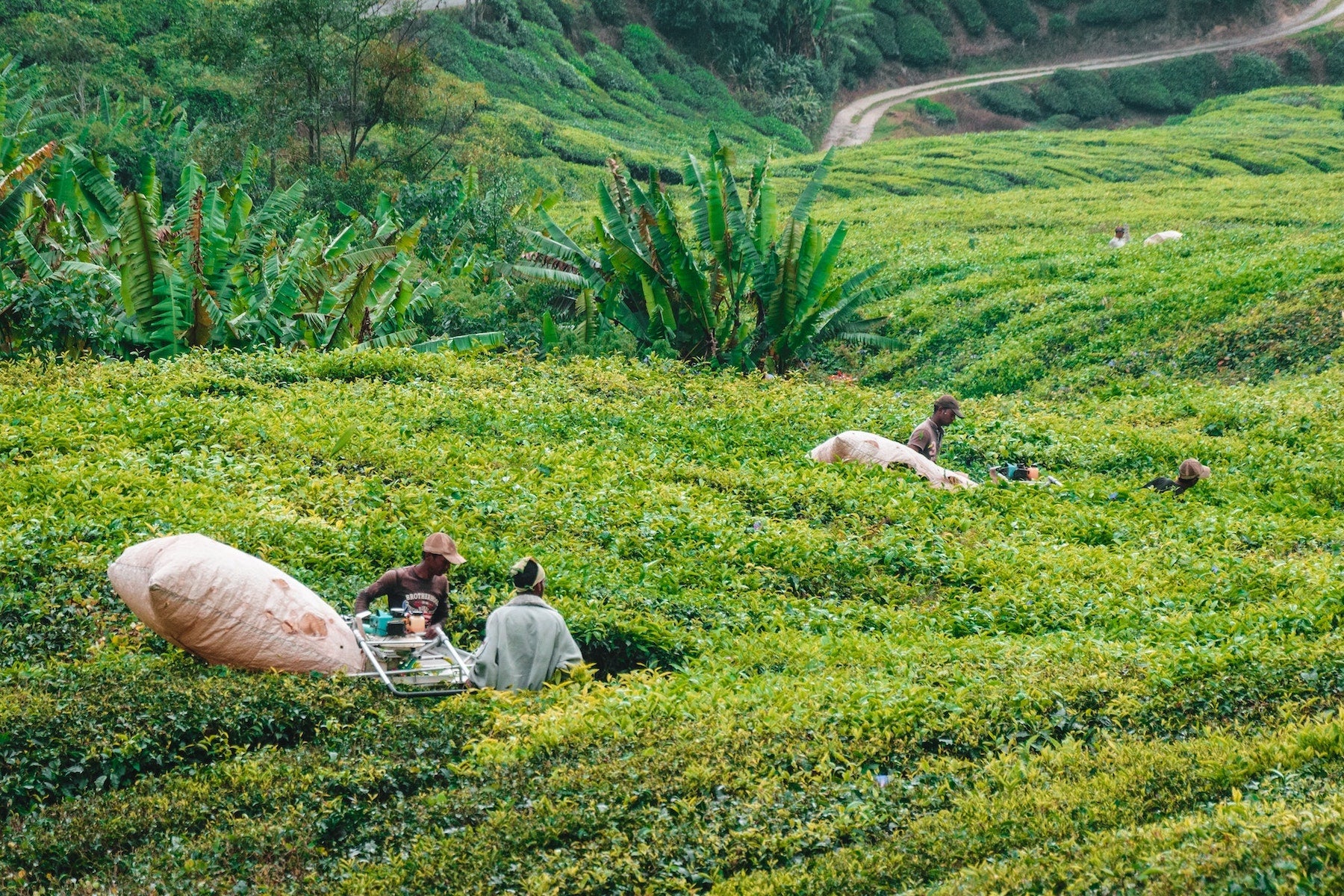How is Tea Harvested?

Tea is harvested throughout the year, but peak production occurs between April and June. The harvesting process can be laborious, depending on the tea produced. Generally, there are two methods of harvesting: manual and mechanical.
Manual harvesting involves plucking leaves by hand or cutting entire shoots with scissors and placing them in baskets or trays. It is time-consuming and demands great skill, agility, and stamina to perform consistently through peak production periods.
Mechanical harvesting is quicker than manual methods but requires significant upfront investment in equipment and maintenance to ensure efficiency and reduce operating costs. It also reduces the risk of damaging leaves during the harvest process.
Both manual and mechanical harvesting processes have their benefits – each has its pros and cons regarding cost savings vs. output optimization vs. quality assurance, etcetera.
Manual Harvesting
Manual harvesting is a traditional method for harvesting tea leaves. It is a labor-intensive process that requires great skill and agility. Harvesting machines only work well in the tea fields because of the twisted shape of the plants, so all the leaves are picked by hand.
This method is time-consuming and expensive, but it provides high-quality tea. The best time to harvest tea is when the leaves are fully grown before maturing. The leaves are made of many layers, and picking them before they develop will allow them to retain more flavor and nutrients.
At the right time, the tea bushes are combed to remove the leaves. The leaves are placed in baskets and taken to the processing plant, where they are dried and made into tea.
Mechanical Harvesting
Tea can be harvested mechanically by cutting the entire bush or picking individual leaves. Most tea producers will miss the whole brush. This method is quick, but it can also cause damage to the plant and soil.
Picking individual leaves is the most careful way to harvest tea. It requires careful handling of each leaf, but it is the best way to ensure that the plant is not harmed. After the tea leaves have been harvested, they are transported to the drying house.
There are two methods of drying leaves: hot air drying and sun drying. Hot air drying is done in large, well-ventilated buildings.
It is faster than sun drying but takes place in an enclosed environment, damaging the leaf's flavor. Sun drying takes longer, but it is done outside in the open air, which helps retain the leaf's taste.
Drying the Tea Leaves
After harvesting, the leaves are quickly dried to halt their enzymatic action and prevent fermentation. The drying process also allows the leaves to be graded based on moisture content.
The tea's final taste and appearance are also affected by the moisture content of the leaves. If the leaves are too wet, they develop a harmful mold and may not be marketable.
If the leaves are dry, they retain their flavor and color. Most tea producers want the leaves to be slightly brittle when thoroughly dried.
Tea leaves are dried in large, well-ventilated buildings on large trays or mesh belts. The leaves are tumbled in a rotating drum until they are scorched. After they are dried, they are stored in airtight containers until sold.
Quality Assurance and Control
Tea producers must take several steps to ensure their product is high quality. All workers must be well-trained to produce consistent results.
They must strictly follow the proper procedure for harvesting and drying the leaves. The equipment must also be adequately inspected and maintained to avoid contamination of the tea leaves.
All facilities must also be carefully monitored for cleanliness. Contamination can occur if workers follow proper hygiene practices or if the equipment needs to be cleaned correctly. The finished product must be tested for quality and safety before selling it.
Conclusion
The harvesting process of tea ensures that the tea leaves retain their flavor and nutrients while also being aesthetically pleasing. While all types of tea are harvested using the same basic techniques, they are not all produced at the same rate.
For example, black tea leaves are typically fermented for more extended periods than green tea leaves to make a darker, more flavourful beverage. The harvesting process can be done manually or mechanically. If done manually, it is time-consuming and demands great skill, agility, and stamina to perform consistently through peak production periods.
